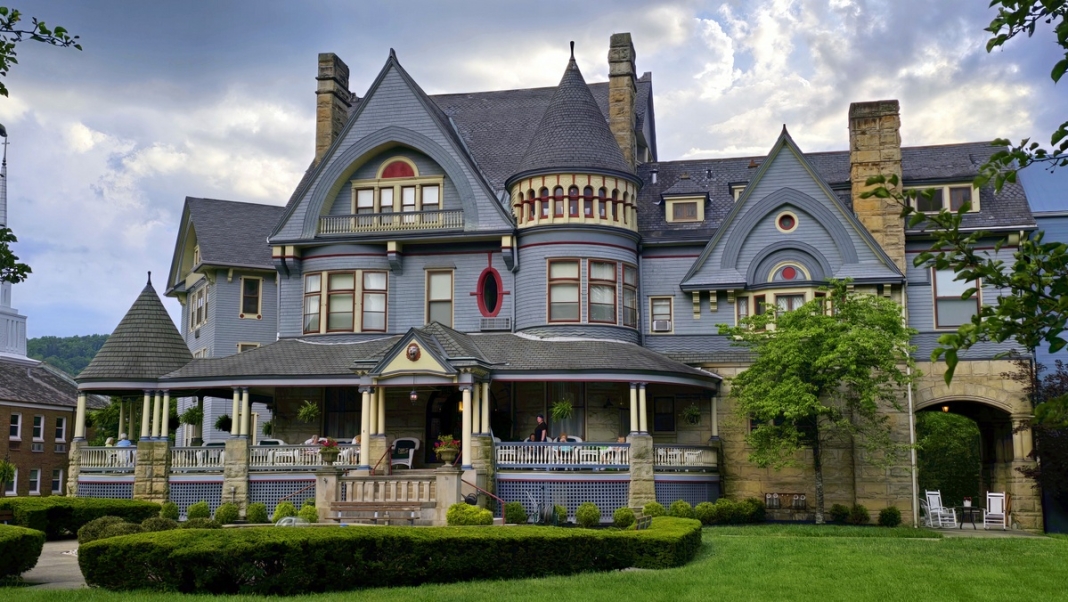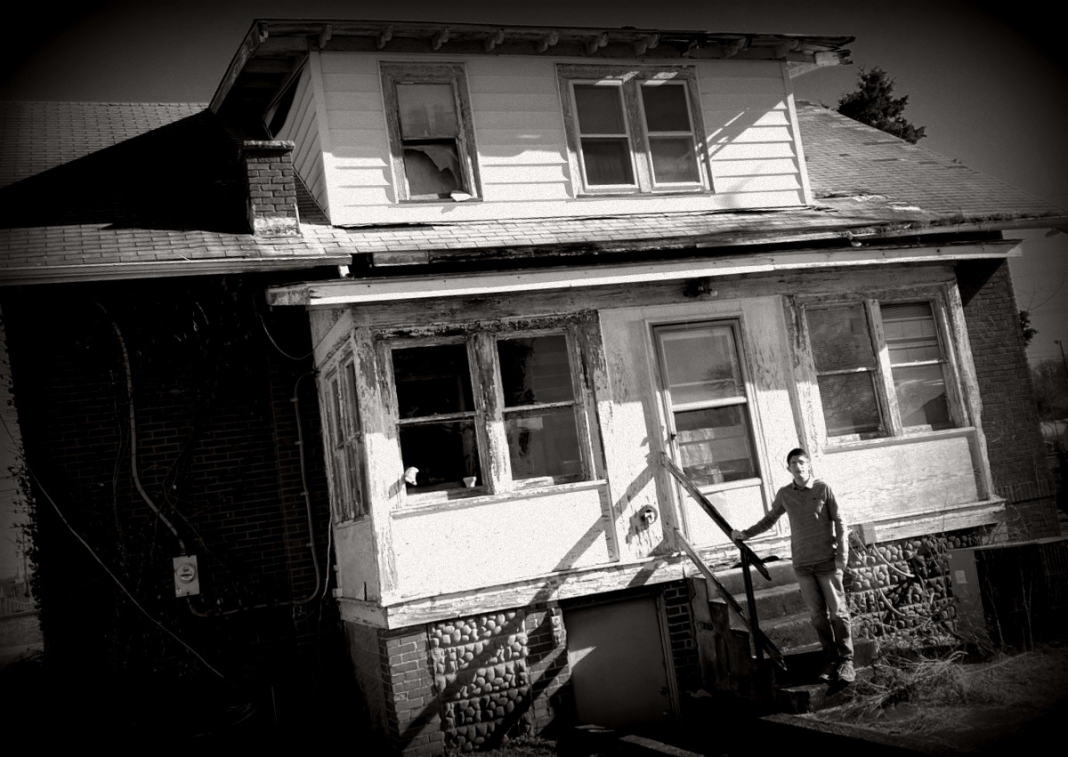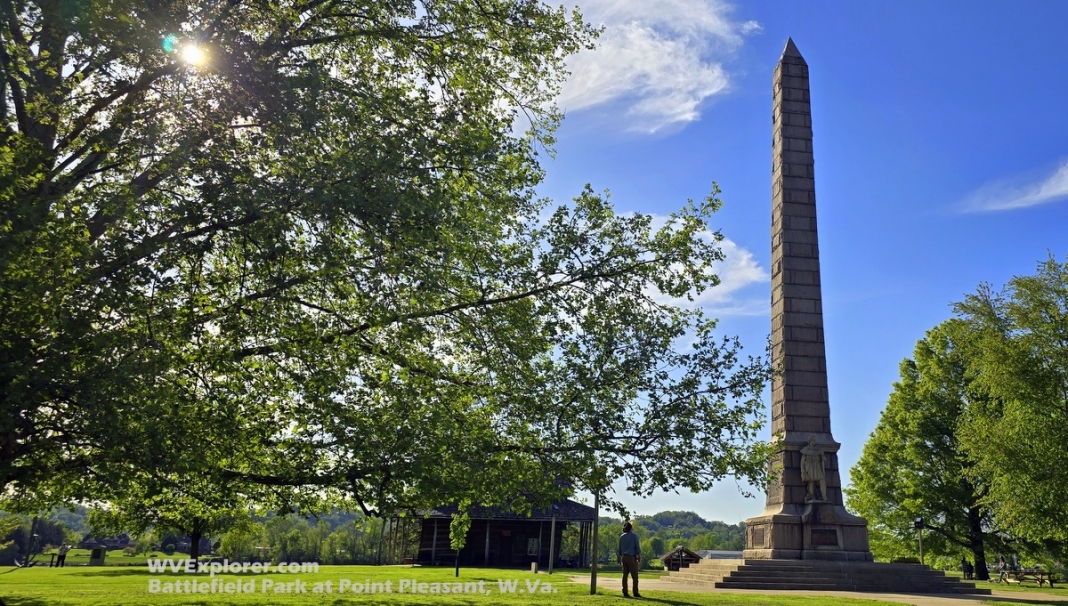WHEELING, W.VA. — Perhaps the most fantastic Victorian residence ever built in West Virginia was that of the founder of the company known for Mail Pouch Tobacco.
Samuel Bloch, co‑founder and president of Bloch Brothers Tobacco Co., spared little expense in 1891 while creating the elaborate 20-room mansion on National Road in Pleasant Valley, which was then among the most fashionable addresses in the country.
After cutting his teeth as a grocer and court reporter, Bloch, at age 29, in 1879, turned to tobacco production with his brother, Aaron. Their rapid success lay in packaging flavorful scrap tobacco into “Mail Pouch,” which soon became popular across rural America.
By 1900, the Bloch brothers were among Wheeling’s largest employers, celebrated not only for their commercial endeavors but also for their community investment, which included donations to the city's elaborate public parks and Ohio Valley General Hospital, which was recently demolished.
Much of their success came from an innovative program of barn advertising. Although barns at the time commonly served as billboards, the Blochs invested heavily in a concerted campaign, and at their peak, they had commissioned as many as 20,000 barns across 22 states.
They were usually hand-painted in black or red with yellow or white capital lettering, and read: "Chew Mail Pouch Tobacco—Treat Yourself to the Best."
Barn owners were initially paid between $1 and $2 a year for the advertisement, which was equivalent to about $20–40 today. More importantly, they received a fresh coat of paint to preserve the integrity of the wood.
With the success of the Bloch Brothers Tobacco Co. came the opportunity for opulence. In 1891, Bloch commissioned Pittsburgh architect Frederick J. Osterling to design a masterpiece.
Osterling had famously designed and built homes for investor Charles Schwab and industrialist Henry Clay Frick, though his practice faltered after Frick filed a lawsuit and controveris arose regarding his anticipated alteration to the landmark Allegheny Courthouse, designed by Henry Hobson Richardson.
Yet at the height of his abilities, he provided Bloch a house that would be the envy of all who traveled the National Road westward into the American frontier.
The house was truly a masterpiece in the Queen Anne style, a category of Victorian architecture renowned for its porches, turrets, balconies, and complex roofs. The name "Elmhurst" itself conjures the elm‑lined estate Bloch lovingly cultivated.
Elmhurst was designed to project wealth, taste, and modernity in late 19th-century Wheeling. Its dramatic profile, decorative detailing, and solid base narrated a story of aspiration—a symbol of the city’s rising industrial success and cultural elevation.
According to the Society for Architectural Historians, Elmhurst is an outstanding example of classic Queen Anne architecture as it's rendered in the U.S.
Its asymmetry, historians point out, is revealed in varied elevation with projecting bays and recessed sections. Its material variety incorporates a sandstone base, shingle siding, and wooden decorative trim. Its complex roof employs multiple gables, hipped areas, and dormers. Its cylindrical corner turrets add verticality. Its Queen Anne ornamentation includes brackets, shingle patterns, and gable embellishments. And Classical touches, such as sturdy porch columns, borrow from Doric precedent.
Following Bloch's death in 1937, his children—Jesse, Harold, Dorothy, and Marilyn—chose to designate the estate as a home for elderly women. Their mother, Bertha, had served on the board of the West Virginia Home for Aged Women, and so in 1940, the mansion was reborn as The House of Friendship, expanding to admit both men and women.
Updates and additions in 1942, 1989, and 2009 evolved to meet the expanding needs of senior care. An elevator, updated kitchen, and private baths—while preserving the historic core, and wings were added to support more residents.
Today, Elmhurst is a living museum. In 2023, Wheeling’s public library ceremonially returned a portrait of Samuel Bloch to his former home, and Elmhurst director Jamie Crow remarked that the picture “restores a direct link to the estate’s founding spirit.”
Elmhurst is woven deeply into Wheeling’s civic fabric. The family’s philanthropy, which once built hospitals and public spaces, continues to be a strong presence. Donations, such as a Bloch-funded nurses’ home, still benefit Ohio Valley Medical Center, and the Mail Pouch tobacco legacy lives on as Americana folklore.
Through events like Arbor Day commemorations—where a new elm is planted to honor the estate’s namesake trees—Elmhurst remains committed to civic pride and community engagement.
Walking the grounds of Elmhurst, one might pause beneath the shade of a new elm—planted not just to replace a lost tree, but to root the next century. Inside, stained‑glass windows refract stories of tobacco fortunes, civic duty, family love, and the evolution of elder care.
Here, Wheeling finds a story made manifest—of wealth converted into welfare, of architecture morphed into activation, and of time honored not by preservation alone, but by continuous purpose.
The mansion rises, elm‑shaded and sandstone‑strong, not as a relic, but as a living symbol—a house of friendship, in deed, and name.
At 1228 National Road, the Elmhurst estate continues to attract passersby and photographers, although the residential care facility is off-limits to unscheduled visitors. Tours of the home are offered sporadically by arrangement.
For more information on the home and its history, contact the Wheeling Convention and Visitors Bureau.
Horrific origin of West Virginia city name Wheeling: "Place of the Skull"

WHEELING, W.Va. — To the average motorist hurtling through the City of Wheeling on Interstate 70, nothing about the place might seem particularly nefarious. It's a bustling town of Victorian treasures. However, the story behind the name "Wheeling" is rooted in darkness. READ THE FULL STORY HERE.
Sign up to receive a FREE copy of West Virginia Explorer Magazine in your email weekly. Sign me up!




I think this place is a wonderful place i personally have not been inside to visit or volunteer but I think it wonderful that it is still preserved there and also helping the community and the people that live there too.
We live nearby, to the point where I walk my dog by Elmhurst almost every night on National Road. You can see the roofline from my back porch, towering over the surrounding small businesses. But it is not out of place. It sits near two ornate churches, both with large portals and tall steeples. The Elmhurst building is so beautiful, in architecture and groundskeeping, that it molds the corner of Washington Ave. and National Road, rather that dominate it. It flows with the natural beauty of the trees, flowers, fountain, and hip-high stone wall that separates the property from National Road.
I learned so much about the Elmhurst home by reading the article. My wife's uncle worked for Bloch Brothers for his entire professional career. He started as a laborer right out of high school and moved through the ranks, recently retiring from the main office. Bloch is a staple of Wheeling and as much a part of it as the famous suspension bridge or wharf along the Ohio River. Great article! Please do take the time to go by this magnificent place. A stroll by on foot or a glance over during a bike ride will have you fitting in on National Road as much as Elmhurst sits among the beautiful structures in Pleasant Valley!
I am a teacher.of West Virginia History.It is wonderful having part the history of Wheeling.
I never saw information of this hostoric.place in any of the class books I have.
It was exciting to find another historic sight in Wheeline. Than you so much for the WV history lesson.
Would love to see.do I have. To make registration?
"[T]he residential care facility is off-limits to unscheduled visitors. Tours of the home are offered sporadically by arrangement."
The author is saying that this is still a care home for real peole and not a tourist attraction although they make occasional exceptions.
Wow! What a wonderful and informative story.
Thank You for sharing another bit of Country Roads I will really look for the Mail Pouch Barns.
Martha S
.
I used to feed mr steward block for years at River City he said as a great golfer new what he liked to eat id make him anything he wanted he would wait funny thing I never asked him for a good cigar ? I know he get me one u are missed eating there daily rest in peace and don't beat up God to much playing golf u knew my mom lela from civic center she feed all the clubs I helped he along with my two sister wheeling is a better place thank to your family generous grants